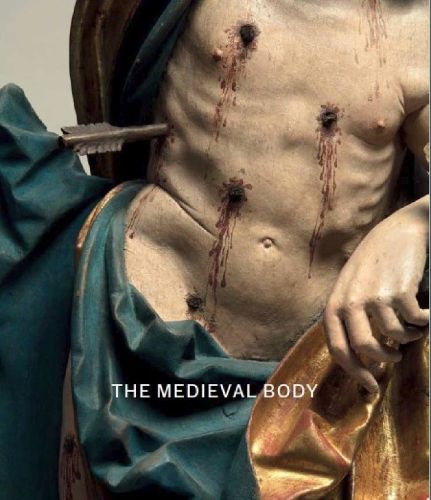Readings Newsletter
Become a Readings Member to make your shopping experience even easier.
Sign in or sign up for free!
You’re not far away from qualifying for FREE standard shipping within Australia
You’ve qualified for FREE standard shipping within Australia
The cart is loading…






This fascinating and richly illustrated book accompanies The Medieval Body, the third in a series of vanguard exhibitions that places medieval masterpieces within a contemporary context. The title of the exhibition refers to both a literal thread of figuration that runs throughout the works in the presentation, as well as the complex and often shifting symbolism of the human body in the medieval period. For thinkers and artists of that time, the human body served as a rich source of religious and philosophical significance, one that was in a constant state of flux between idealism and disfigurement. While the early Middle Ages reserved representations of suffering bodies to the margins of their world, the later Middle Ages displayed wounded bodies in the most central spaces of public life. The crucified body of Christ and the wounded bodies of saints assumed important positions as they were displayed on altars, in processions, and on the exteriors of churches. The Medieval Body tells a unique story about the human form as both a physical entity and a recognizable metaphor. Presenting works spanning the course of a thousand years, this exhibition offers insight into the body as an essential imagemaking tool with far-reaching implications for the development of art in the European Middle Ages.
AUTHORS: Jana Gajdo ova is a specialist at Sam Fogg in London. Her work has been published in Zeitschrift fur Kunstgeschichte, Journal of the British Archaeological Association, Speculum, and GESTA. Matthew Reeves is a director at Sam Fogg and leads its team of medieval specialists. He has coauthored publications including Late Medieval Panel Paintings Vol. II: Materials, Methods, Meanings; Maiolica before Raphael: Italian Ceramics before 1500 and Late Medieval and Renaissance Textiles. 82 colour illustrations
$9.00 standard shipping within Australia
FREE standard shipping within Australia for orders over $100.00
Express & International shipping calculated at checkout
This fascinating and richly illustrated book accompanies The Medieval Body, the third in a series of vanguard exhibitions that places medieval masterpieces within a contemporary context. The title of the exhibition refers to both a literal thread of figuration that runs throughout the works in the presentation, as well as the complex and often shifting symbolism of the human body in the medieval period. For thinkers and artists of that time, the human body served as a rich source of religious and philosophical significance, one that was in a constant state of flux between idealism and disfigurement. While the early Middle Ages reserved representations of suffering bodies to the margins of their world, the later Middle Ages displayed wounded bodies in the most central spaces of public life. The crucified body of Christ and the wounded bodies of saints assumed important positions as they were displayed on altars, in processions, and on the exteriors of churches. The Medieval Body tells a unique story about the human form as both a physical entity and a recognizable metaphor. Presenting works spanning the course of a thousand years, this exhibition offers insight into the body as an essential imagemaking tool with far-reaching implications for the development of art in the European Middle Ages.
AUTHORS: Jana Gajdo ova is a specialist at Sam Fogg in London. Her work has been published in Zeitschrift fur Kunstgeschichte, Journal of the British Archaeological Association, Speculum, and GESTA. Matthew Reeves is a director at Sam Fogg and leads its team of medieval specialists. He has coauthored publications including Late Medieval Panel Paintings Vol. II: Materials, Methods, Meanings; Maiolica before Raphael: Italian Ceramics before 1500 and Late Medieval and Renaissance Textiles. 82 colour illustrations